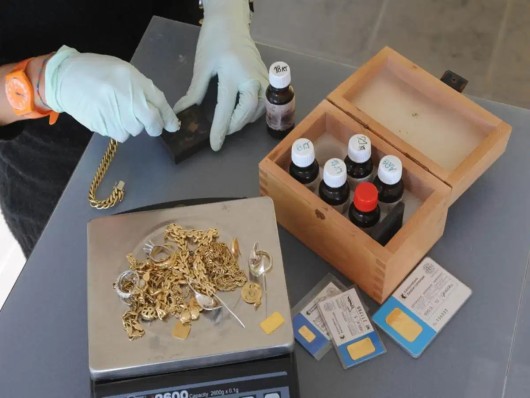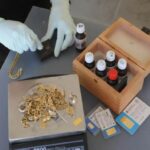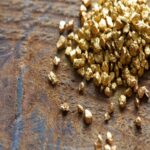Testing the authenticity of gold at home is important to ensure you have genuine precious metal. To do this, you can start with a magnet—real gold isn’t magnetic, so if it sticks, it’s likely fake. You can also conduct a visual inspection, checking for any discoloration or unusual markings. Use a magnifying glass to examine intricate details, as real gold is often finely crafted. Conduct a density test by placing the gold in water; real gold is dense and sinks. Finally, try the “nitric acid test” on a small part; genuine gold doesn’t react, while fake gold might change color. Always handle acids with care.
Testing Gold using mercury
Using mercury for testing gold authenticity at home is not recommended due to safety and health hazards associated with handling mercury. Mercury is a toxic substance that can be absorbed through the skin, inhaled, or ingested, leading to severe health issues. Instead, it is advised to use safer methods like those mentioned earlier, such as visual inspection, magnet test, density test, and nitric acid test (with proper precautions).
If you are unsure about the authenticity of your gold, it’s best to consult with a professional jeweler or appraiser who can employ safe and accurate testing methods to determine the genuine nature of the gold without putting your health at risk.
Other ways to test Gold are
- Ceramic Plate Test:
Rub the gold item against an unglazed ceramic plate.
Real gold will leave a gold streak, while fake gold may leave a black streak.
- Scratch Test:
Use a gold testing kit that includes a testing stone and gold testing needles.
Scratch the gold on the testing stone and apply testing solution to the mark.
Genuine gold will not react, while fake gold may cause a color change.
- Electronic Gold Tester:
Purchase an electronic gold tester designed for home use.
These devices measure the electrical conductivity of the metal to determine its authenticity.
- UV Light Test:
Shine a UV light on the gold item.
Real gold does not react to UV light, while some fake gold may exhibit a different fluorescence.
- Bite Test:
While not as accurate, you can try biting the gold gently.
Real gold is a soft metal and should show bite marks, but this method is less reliable.
Remember, for more accurate results, it’s advisable to consult with a professional jeweler or use certified testing methods. Always exercise caution and follow safety guidelines when testing gold at home.
Why test Gold before you own it
Before you buy or invest in gold, it’s crucial to take the time to test its authenticity. By ensuring that what you’re getting is genuine gold, you can avoid the disappointment of discovering that your purchase isn’t as valuable as you thought. Remember the old saying, “Not everything that glitters is gold.” This proverb means that just because something looks shiny or attractive doesn’t necessarily mean it’s valuable or genuine. Similarly, some fake materials may appear gold-like but lack the true worth of real gold. So, before making any gold-related decisions, take the necessary steps to verify its authenticity and make a wise investment.
Equip with the testing Knowledge
It’s essential for buyers to equip themselves with the basics of authenticating gold because deceptive practices exist. Some sellers might employ misleading tactics to make non-gold items appear genuine. By learning the real ways to test gold, you empower yourself to make informed decisions and protect your investment. Knowledge of testing methods, such as visual inspections, density tests, and acid tests, can serve as a shield against potential deception. Remember, an informed buyer is less likely to fall prey to fraudulent schemes. So, take the time to familiarize yourself with these testing techniques, ensuring you can confidently verify the authenticity of any gold product you consider purchasing.














